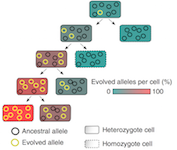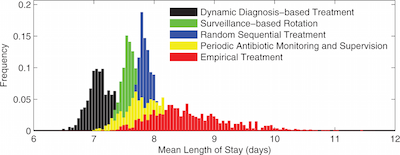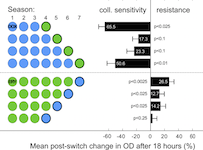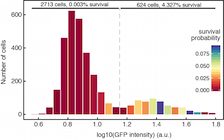Rafael Peña-Miller
Research Interests
My current research interests focus on using mathematical and experimental models to study microbial evolution. The aim of these models is to study metabolic and genetic processes at a single-cell level, with the purpose of understanding complex ecological and evolutionary processes.
I participate in several collaboratory and interdisciplinary research projects somewhere between mathematical and computational modelling and experimental microbial evolution. In general, the goal of these projects is to integrate detailed molecular and microbiological data obtained from laboratory experiments and clinical studies with mechanistic theoretical models of antibiotic resistance evolution.
About Me
I was born in Mexico City around the corner from the stadium where arguably the best football team in the world plays. I studied an undergraduate degree in Mathematics at UNAM and then a PhD in Mathematics at Imperial College London. After a couple of postdocs (Biosciences, University of Exeter & Zoology, University of Oxford) I returned to Mexico as an Assistant Professor at the Center for Genomic Sciences, UNAM. I'm now stochastically switching being the father two amazing girls and setting up an interdisciplinary lab focusing on microbial systems biology (drop me a line if you are interested in joining our lab).
Besides my current research projects I also enjoy juggling and scuba diving. I've been a Pumas and Fulham's season ticket holder. I like cooking, coding and designing websites.
rpm@ccg.unam.mx
penamiller
+52 (777) 313 4152
Centro de Ciencias Genómicas
Av. Universidad s/n.
Chamilpa, CP 62261.
Cuernavaca, Mexico.
Publications
-

Multicopy plasmids allow bacteria to escape from fitness trade-offs during evolutionary innovation
Nature Ecology and Evolution (2018).
J Rodriguez-Beltran, JCR Hernandez-Beltran, J DelaFuente, JA Escudero, A Fuentes-Hernandez, RC MacLean, R Peña-Miller & A San Millan
-

Antibiotic Cycling and Antibiotic Mixing: which one best mitigates antibiotic resistance?
Molecular Biology and Evolution, msw292 (2017).
R. E. Beardmore, R. Pena-Miller, F. Gori and J. Iredell
-

Using a sequential regimen to eliminate bacteria at sublethal antibiotic dosages
PLoS Biology, Vol. 13, No. 4, e1002104 (2015).
A Fuentes-Hernandez, J Plucain, F Gori, R Peña-Miller, C Reding, G Jansen, H Schulenburg, I Gudelj and R Beardmore
Highlighted in PLoS Biology:
Alternating Antibiotics Render Resistant Bacteria Beatable. » -

Positive selection and compensatory adaptation interact to stabilize non-transmissible plasmids
Nature Communications, Vol. 5, No. 5208 (2014).
A San Millan, R Peña-Miller, M Toll-Riera, Z Halbert, A McLean, B Cooper and C MacLean
Highlighted in Nature Reviews Microbiology:
How to keep your plasmids. » -

Bistable expression of virulence genes in Salmonella leads to the formation of an antibiotic-tolerant subpopulation
PLoS Biology, Vol. 12, No. 8 (2014).
M Arnoldini, I Avalos, R Peña-Miller, N Stocker, M Diard, V Vogel, R Beardmore, WD Hardt, M Ackermann
Highlighted in PLoS Biology:
Bugs Split to Attack and Gamble to Survive »